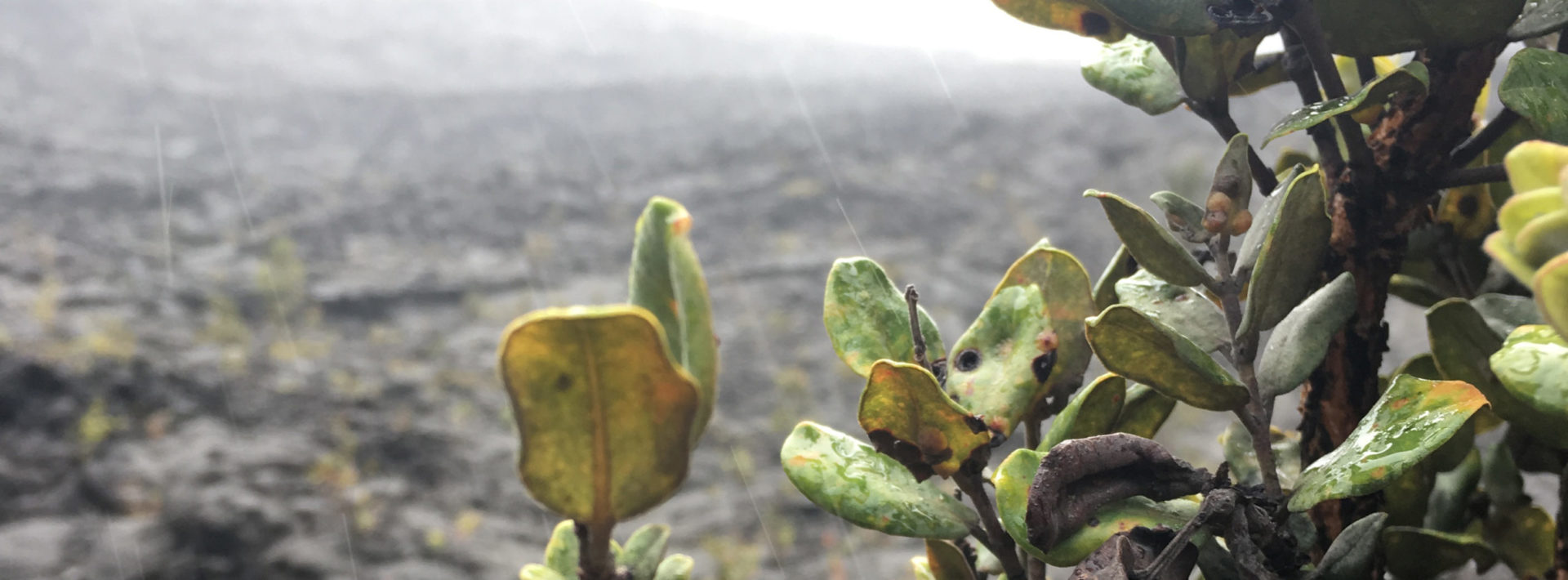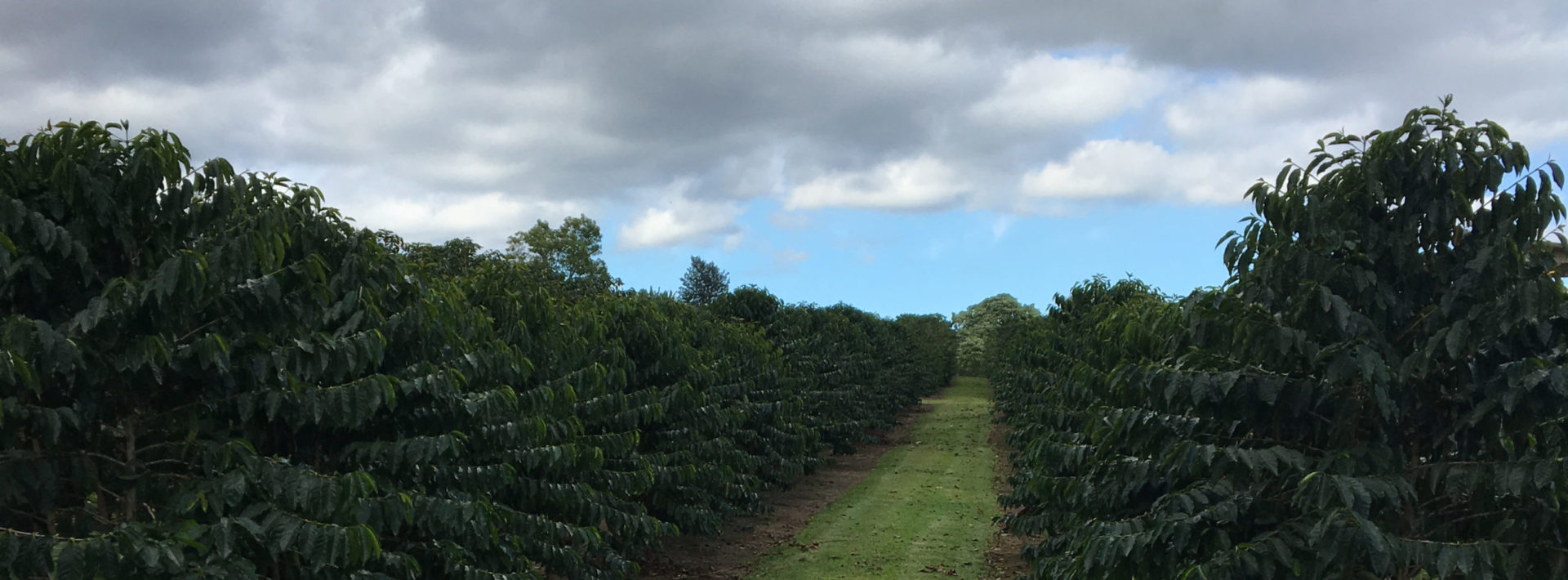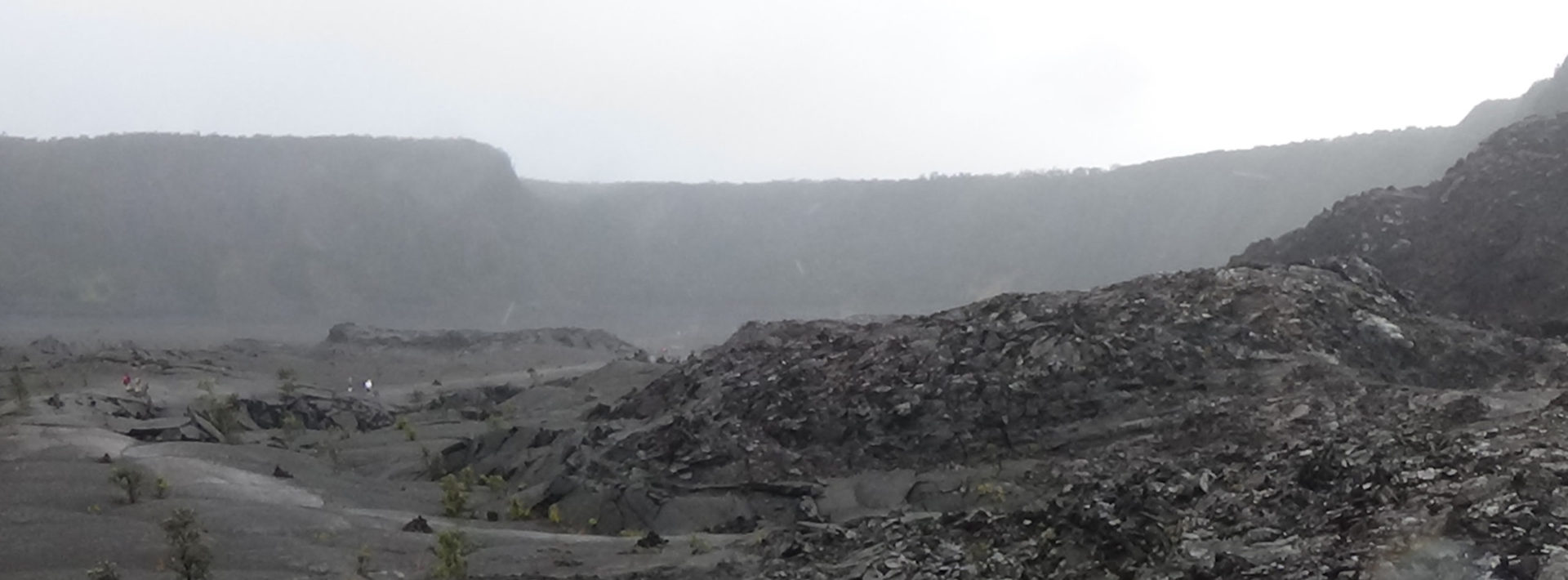TREX 2018 Day 3: Biodiversity in the Kilauea Iki Crater

By Ju Chulakadabba ’19
While the world has roughly 13 climate zones, Hawaii has more than ten of these climate zones in its small islands. As an environmental engineering student, I am interested in various things related to the environment, and botany is one of them. For me, it was fascinating seeing different types of plant species cluster in one small area.
Today, we had a hike at Kilauea Iki Trail. This 1959 lava lake is surrounded by tropical rainforest, yet had a desert-like environment down the crater. The explanation for the phenomena would be the biological succession in this area after the lava flow. Since all the vegetation was demolished after the lava flow, the ecosystem needed to be gradually developed for the more complex environment–a primary succession (thanks 1.018: Fundamentals of Ecology!).
Let’s start with the first group of species that would be the pioneer species after the lava flow: algae, fungi, and lichen (a combo of algae and fungi). These species were more resilient compared to the seed plants. At the national park, I saw at least three different types of lichen.



Three different types of lichen that I found. They did not seem to coexist in one place. They also preferred the heat, as we could see them clustered near the hot stream vent (photo three).
Moving on to the later stage of primary succession, we also found some grasses and perennial plants. Here are the examples of the plants and their Hawaiian names:

Baby Hāpu‘u Pulu (Blond Tree Fern)

Kupukupu (Sword Fern)

Poisonous Akia (False Ohelo)

Ohelo (native Hawaiian berries)

Sick Ohelo with tumors
The further we moved away from the crater, it would be harder for us to tell the stages of succession. Outside the trail, we found tropical rainforest that was closer to climax community ecosystem and many more plants.

Besides than the green living organisms, we also spotted other living organisms, like birds, too.

Nene, the Hawaii state bird, spotted near our cabin.
Every year, a group of MIT students and professors travel to the Big Island of Hawaii to gain fieldwork experience through TREX (Traveling Research Environmental EXperiences). The first TREX trip was held in 2000, and since launching has taken students on research activities in domestic and international settings. For more undergraduate opportunities, click here.



